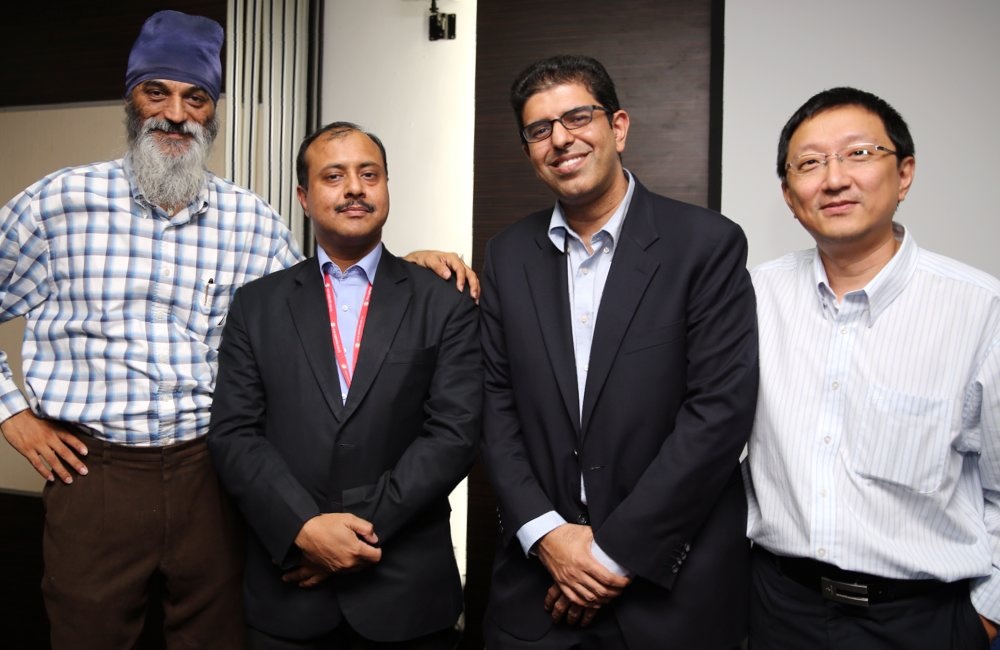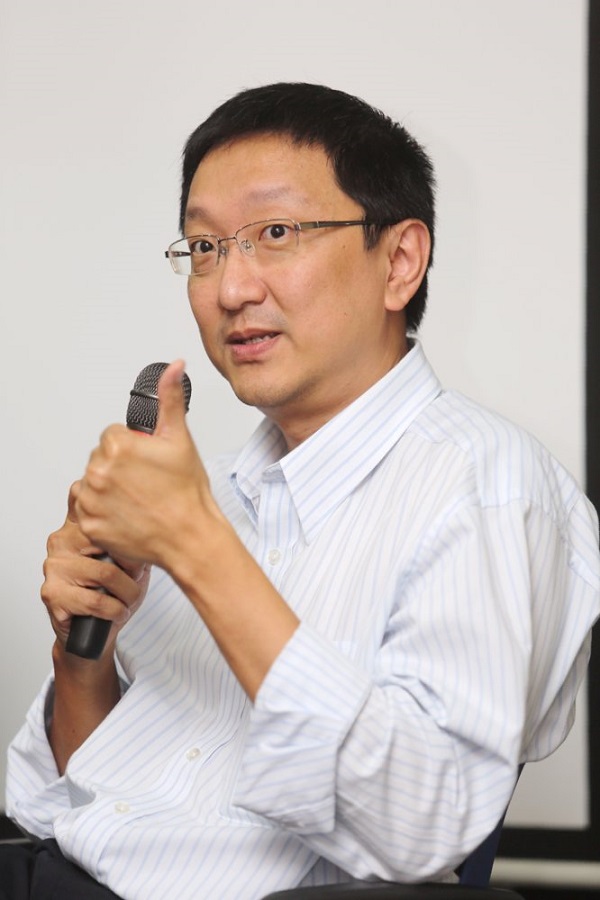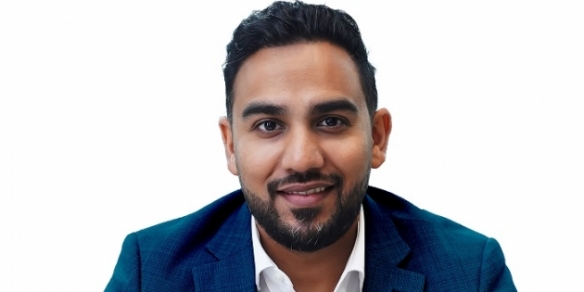Disrupt: ‘Everyone’s a CIO’ these days: Page 2 of 2
By A. Asohan March 27, 2014

Visions of the future
The CIO’s challenge is not only about dealing with what’s out there today, but charting a roadmap for the future. All three panellists expect the cloud and mobility to play a big role in their plans.
According to KPJ Healthcare’s Dr Mubbashir, two of the group’s hospitals have been running in a virtual private cloud environment for the last six months.
“Four of our 24 hospitals have, since 2012, moved from client-server mode to virtualisation and the cloud, and by June we hope to have 16 hospitals on the cloud.
“We have seen a lot of improvement in terms of infrastructure services and savings, and in so many other areas,” he added.
It is virtually, no pun intended, the same for Goh, who joined Eversendai last November.
“I’m new to the company, so I see a lot of areas in which we can improve – we’re still running a traditional hardware server and software shop, so I’m looking at moving it to a virtualised environment or towards the cloud.
“My plan for this year is moving to the cloud, but on top of this, also looking at disaster recovery planning and business continuity in relation to the cloud.
“Moving to the cloud is such a loose term. How do you do it? Big enterprises invest a lot on inhouse development and using traditional software like ERP (enterprise resource planning), so we need people with the technical knowledge to propose solutions for how we can move to the cloud without affecting our operations.
“That’s the biggest challenge – we cannot afford to stop our systems to move to the cloud,” he said.
Goh also said that local companies could play a role here, but they would need to get serious about their value proposition.
“I have looked at the big vendors, but also local players who rent some data centre space and propose some open source solutions,” he said. “It is easy to propose solutions; the question is, can you also provide the kind of support we need?”
Mydin is also exploring the cloud. “A private cloud is cheaper; and the public cloud is even cheaper – but more important is the agility,” said Malik.
“The golden rule for me is that a system should be able to be deployed within three months – 90 days. On average actually, with the cloud, it can be done within a month.
“The days of customisation are over; we’d rather take an available application and adopt it – chances are, that fellow who developed a helpdesk system knows more helpdesks than you,” he added.
‘You guys need to step up’
This is where smaller, local players can come in. Malik said that Mydin is very open to working with local players, and in fact, prefers them to an extent.
“We prefer to ‘buy local’ because of the relationships we can build and the support you can give, but you guys (local providers) also have to step up. You must not only know how to put in the server, but you must understand the technology, or even the philosophy behind the technology.
“That’s the difficult part: Anybody can sell Milo; to make good Milo, that’s the challenge,” he said, referring to a popular chocolate-flavoured beverage. “Get serious about what you’re doing.”
Malik said he prefers to work with companies are very focused on his vertical, the retail industry, because of the challenges he will face over the next three years.
“First of all, we will have a large number of sites – 600 stores, and we will be managing 30 malls. Our employees would have grown in size to 15,000 to 18,000 people, and our customers would have also changed.
“E-commerce will be the new normal, and everybody will probably have something on it on their handphones.
“What we have to do, what we have to start today, is thinking about what’s going to happen in the next three years. Moving to the cloud, that’s definite. Virtualisation, so that we can be more flexible, more quickly. Adopting an e-commerce and mobility strategy. A lot of these investments are already going on.
“The challenge is capability. Our inhouse capability is of course limited, because our job at the end of the day is to run our stores, to make sure our POS is running. Finance system down? Never mind. POS system down? We’re dead.
“Looking at that, we will have to work with a lot of partners. And what we tend to do is to look for those niche players: People who are very laser-focused. It means you’re serious about your business. These are the players we want to tap, to build a relationship with so that we can grow together,” he added.
And he has a bit of advice too: Don’t try to take local enterprises for a ride. “Don’t worry about selling to local guys. We’re not cheap. We will pay for value, but price your product correctly – don’t think you’re selling RM50,000 laptops to the government,” he said.
Malik also noted that the retail industry are big spenders when it comes to technology. “We’re probably the second-biggest spender on technology after defence. If you look at the United States, the biggest spender on technology is defence; second is Walmart. In the United Kingdom, after defence, there is Tesco.
“Retailers spend a lot of money, to make money,” he said, adding that his IT budget is typically 1% of revenue, and noting that Mydin records about RM2.5 billion in business.
“I’m always on the lookout for technologies that not only make my life easier from an IT management perspective, but also those that can help me connect with my customers,” Malik said.
For its part, to help chart its roadmap, KPJ Healthcare has a department called SOT (Strategic Operations and Technology), which looks at new innovations and devices – “any new idea that is thought up, the SOT people will look into it,” said Dr Mubbashir.
“We’re always busy on the hardware side – we’re rolling out new backend applications on the [Microsoft] DotNet platform, and we’re going to roll out the Electronic Medical Records app on to the cloud.
“We have more apps developed inhouse that have not been launched yet, and we’ll be working on rolling them out,” he added.
KPJ Healthcare’s current president Amiruddin Abdul Satar first came into the role, formerly known as managing director, on Jan 1, 2013, and has a clear vision of the role IT can play.
“He said ‘the first thing on his agenda is information technology and customer service. The next would be IT alone, so figure out how to automate the process,” said Dr Mubbashir. “We have to bridge the gap to become more patient- or consumer-focused.”
KPJ Healthcare is already working on initiatives that would allow patients to manage some of their own records, and even moderate which doctors can view them.
“We, as a healthcare provider, have a vision where patients should be able to decide on their care. We have to give them decision support systems where they can determine how they can proceed overt the next five or 10 years, for example,” said Dr Mubbashir.
 “Enabling patients is a must these days,” he added.
“Enabling patients is a must these days,” he added.
For Eversendai’s Goh (pic), it is to put in place the next evolution in document management, or enterprise content management as it is called these days.
“We deal with a lot of architects, and they are essentially third parties, and what happens now is that they fax or email their drawings and designs – so I am actually exploring enterprise content management systems where you can create all the documents and drawings, store them by project, give different access levels to third parties into our system – with limited access to certain portions – so that we can share information [between external parties and internal stakeholders].
“[I want] all the information available in one area, with regards to a particular project. That is my goal. Local players can definitely play a part in this. Document management systems are not new, the challenge today is making them web-based,” he added.
Goh said he also wants the enterprise content management system to be able to track all the communications and correspondence with regards to specific projects.
“In addition to all the documents, if you can capture all the communications between internal stakeholders and external third parties, this can be very critical.
“In the event, touch wood, there is a legal issue, you have a record of who communicated what with whom,” Goh added. “Project management on steroids? That’s the dream!”
Related Stories:
For a CIO, the real trick lies in asking the right question
Effective CIOs naturally align business to IT: Panel
SAM’s Groceria uses Motorola self-scan tech to improve customer experience
Disrupt #16: Meet the buyers
Mydin IT director confirmed as third panellist for Disrupt #16
The CIO: The cloud changes the game even more
For more technology news and the latest updates, follow us on Twitter, LinkedIn or Like us on Facebook.


